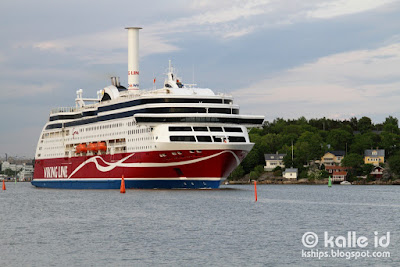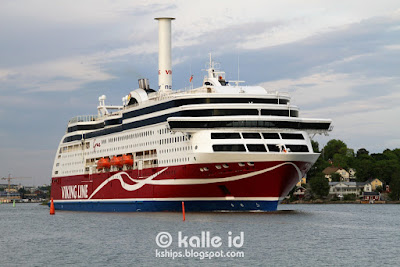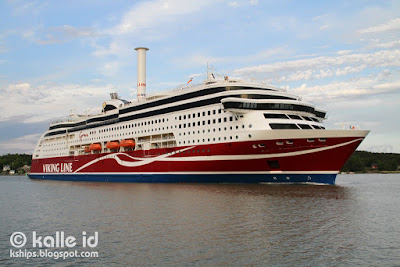Seven Seas Navigator
IMO 9064126
Name history: Akademik Nikolay Pilyugin, Blue Sea, Seven Seas Navigator
Built 1991, Admiralteyskie Verfi, Soviet Union/1999, T. Mariotti Genoa, Italy
Tonnage 28 550 GT
Length 170,69 m
Width 21,80 m
Draugth 6,80 m
490 passengers (lower berths)
4 Wärtsilä diesels, combined 21 000 kW
2 propellers
1 bow thruster
Speed 19,50 knots
The Seven Seas Navigator is one of the select number of ships that were under constriction in the ailing Soviet Union at the time of its break-up that ended up being completed several years later and for a quite different use than had originally been envisioned. In this case, the ship was laid down in 1988 at the Admiralteyskie Verfi in Leningrad as the research vessel Akademik Nikolay Pilyugin (western sources delight in referring to the Soviet research vessels as spy ships, handly obscuring the fact the Soviet Union had the largest number of researchers per capita of any country). Before the ship could be completed the Soviet Union collapsed, and with funding to the numerous research institutes and universities within the former country dried up, work on the Akademik Nikolay Pilyugin was halted in late 1991.
In 1997, under the temporary name Blue Sea, the ship was towed from now-Saint Petersburg to the T. Mariotti Shipyard in Genoa for completion as a cruise ship, a process that included demolishing the already-built superstructure, and refashioning the aft hull entirely (Dover Ferry Photos' page on the ship has nice pictures of the Blue Sea in Genoa, well worth a look if you want to see what it was like in the previous life that never was). In August 1998, what was then Radisson Seven Seas Cruises agreed to buy the ship on completion - a large upgrade to their fleet, which at the time consisted just of the catamaran cruise ship Radisson Diamond and the roro cargo carrier converted into cruise ship Song of Flower, plus the chartered, but purpose-built and brand new, Paul Gauguin. The company's new, undisputed flagship was delivered in August 1999 as the Seven Seas Navigator. (It ought to be noted that while I list the ship's ex names above, it never sailed as anything else than the Seven Seas Navigator).
And since that day the Seven Seas Navigator has remained with the same company - although the company did changed names in 2006 to Regent Seven Seas Cruises, and two years later the then-owner Carlson Group sold the company to Prestige Cruise Holdings. Personally, I am a bit surprised that the name of Regent Hotels still survives in the name of the cruise line - surely it would be more elegant to simply drop the hotel company prefix and rename the brand Seven Seas Cruises?
Brand and ownership issues aside, the Seven Seas Navigator was givena thorough refit at Bremerhaven, including the fitting of a duck tail sponson and swapping the propellers and rudders to new ones, the changes reportedly eliminating all vibrations onboard. The interiors were again refurbished in 2016. Which brings us nicely to the present.
The photos below show the Seven Seas Navigator in, and departing from, Helsinki's Eteläsatama on the late afternoon and evening of 26 July 2018. First photo taken from onboard the Suomenlinna II, the rest from Kustaanmiekka. As always, click on the images to see them in larger size.
 |
| Unsurprisingly, the ship got the best quay in town, the site of the old Kanavaterminaali ferry terminal. |
 |
| You rarely get two ships in the same shot in Helsinki these days, so it was splended to catch the Seven Seas Navigator and the Gabriella in the same frame. |
 |
| I quite like the exterior design of this one - though I must say, Regent's previous livery with purple stripes was more to my liking. |
 |
| A pretty sexy aft section, too! |
 |
| So sexy that it deserves another view. |














